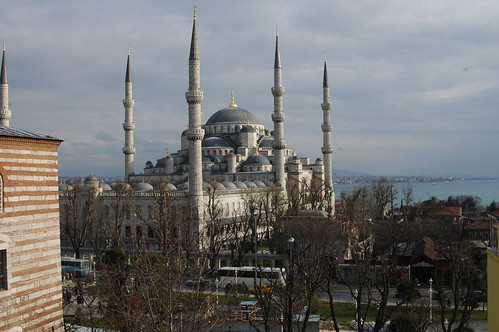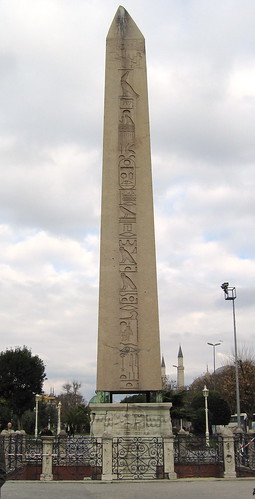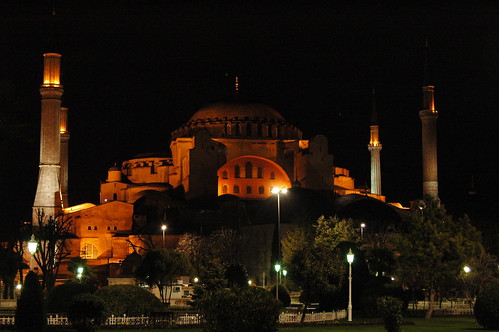As mentioned yesterday, I capped off what turned out to be quite the year of travel earlier this week. This final trip was the result of wanting to join a close friend in his hometown to celebrate his recent wedding. His hometown? Karachi. Not exactly a weekend in upstate New York. After consulting the combined crystal balls of the internet, work requirements, and my own hope to one day touch down in every country on the planet, the trip was broken into three parts: a long Christmas weekend in Istanbul on the way there, a week in Pakistan itself, and then a few recovery days in Athens on the way out.
As is my usual habit, this wasn’t a terribly well planned trip. In fact, I didn’t even have my visa to Pakistan until the day before I left (thank you, visa fairy!). In any event, Lonely Planet – as it unfailingly has for years – served me well. Based on an LP recommendation, I’d booked a hotel (via email the night before, natch) that sent a driver to the airport. Thus, on a Friday morning I found myself slightly wedged into to the front seat of a Fiat*, heading from Ataturk International Airport to the neighborhood of Sultanahmet, where I would be staying.
The route took us mostly along the water’s edge. The water being the Sea of Marmara (new to me!). Not very talkative at first, the taxi driver started pointing out the best seafood joints along the way. This vegetarian just smiled, nodded, and thanked him. With a “thanks.” See, I hadn’t yet sorted out how to pronounce “teÅŸekkürler“, yet. In fact, I should admit it here – I never did manage to wrap my head around much of the Turkish language. I found, however, that I rarely had a problem with any of the English I spoke between “merhaba” (hello) and “teÅŸekkürler” (thanks). Tis an ugly way to travel, but it’s reliable in a pinch.
Since it was a midday arrival, and I’d not really slept on the way over, I didn’t have any ambitious plans for the afternoon. However, the very nice location of the Hotel Turkoman means that very little ambition is required to secure great reward – this is a view from the balcony:

That’s the Sultanahmet Mosque, more famously known as the Blue Mosque. While I generally seek boutique hotels well off the beaten path, this turned out to be the perfect location for this trip. Situated on the original Hippodrome of Constantinople, it’s easy walking distance to the most famous of Istanbul’s historical sights, and an easy tram ride away from modern Istanbul.
The Hippodrome itself is now paved, better suited to tour buses carrying tourists than chariots carrying racers.  But it really was fun to stand in the middle of the street, late at night, and imagine the chariots thundering down the very road on which you were standing. And if you need some help to go back in time, all you need do is look to the center median of the southwestern end of the Hippodrome. Standing there are some rather impressive survivors of war, development, and time. There is the Walled Obelsik (10th century, AD), the Serpentine Column (5th Cent, BC), and the Obelisk of Theodosius. It was a bit boggling to realize that it was erected in 390 AD. It was mindblowing when I understood that the obelisk itself (carted off from its original home in Egypt) dates from ~1500 BC.
But it really was fun to stand in the middle of the street, late at night, and imagine the chariots thundering down the very road on which you were standing. And if you need some help to go back in time, all you need do is look to the center median of the southwestern end of the Hippodrome. Standing there are some rather impressive survivors of war, development, and time. There is the Walled Obelsik (10th century, AD), the Serpentine Column (5th Cent, BC), and the Obelisk of Theodosius. It was a bit boggling to realize that it was erected in 390 AD. It was mindblowing when I understood that the obelisk itself (carted off from its original home in Egypt) dates from ~1500 BC.
So it was from this base that my exploration of Istanbul took place over the next few days. The Haiga Sophia was the first stop. Or was that the Ayasofya? Like so many other places in Istanbul, there’s the Byzantine name, and then the Ottoman name. (Go ahead, get it out of the way.) It was first built in the 4th century, but most of the present form was constructed in 537. Look at it. 537.

It was originally built as an Eastern Orthodox church. It then served as a Roman Catholic Church for a bit. By 1453, it had been converted to a mosque. It owes its present form, a museum, to a 1935 order by Mustafa Kemal Ataturk (founder of Turkey and generally very smart man, when it came to handling cultural sore points). Between my years living in Europe, and my travels in general, I’ve wandered through no small number of cathedrals. But I’ve never been through one so . . . big.This article (see the Construction section) does a fair job of explaining how the architects achieved the illusion of a largely unsupported dome, but you really have to see it.
Exploration of the Ayasofya was ably assisted by 80 year old Mustafa, a tour guide picked up at the entrance. Until recently, you couldn’t have forced me to use a tour guide, even at gunpoint. I mean, what could I possibly need them for? I’ve always got a good guidebook, and I can the read the signs as well as anyone, right? Well, I’ve come to appreciate tour guides, for a number of reasons. First and foremost – they will always have something that your guidebook doesn’t (now, it may not necessarily be true . . . but hey, we all love a good story, right?). Second, a good guide is able to adapt to your interests (e.g., Icons? Not all that interesting to me. The politics behind the designation of the Ayasofya as a museum, instead of a mosque? Very interesting to me). Finally, I’ve come to see it as my way of contributing to the local economy, since I don’t really buy much when I travel. I find it far more satisfying to put €20 into the hand of a man who has worked at the Ayasofya since the 1930s than blow it on some naff shelf thing that will end up in a box somewhere. In any event, I recommend that you consider using these folks on your next trip. Getting the right one may take a bit of practice, but if you go with your gut assessment of someone in the initial selection, and remember that they are there to guide you (and not you there to pay them), you’ll usually be fine.
Next up: the bazaars of Istanbul, the Bosphorus, and (consensual!) assault & battery.
*Actually, it was a TofaÅŸ Åžahin – described on the web as a “Fiat with a facelift.” Ahem. Sure.





